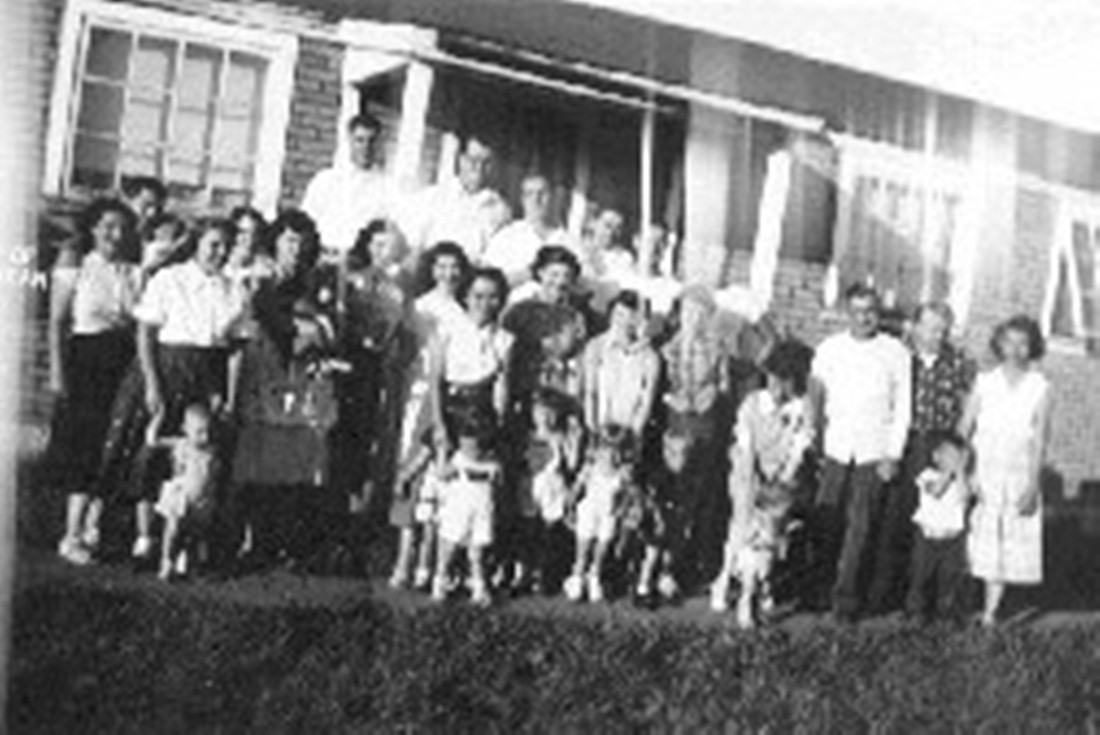
Post War

 After the war came to an end, St.
Bonaventure was home to veterans from all branches of the military. These men
and their families lived in what affectionately became known as Diaper Row.
Diaper Row was located across State St. opposite St. Bonaventure's main
entrance.
After the war came to an end, St.
Bonaventure was home to veterans from all branches of the military. These men
and their families lived in what affectionately became known as Diaper Row.
Diaper Row was located across State St. opposite St. Bonaventure's main
entrance.
The photo
above was taken from the grandstands of the old football
stadium. In the top
left of the photo you are able to see the Clubhouse. If a picture was taken of
this spot today you would see a hotel that sits across the street from the main
entrance of campus.
St. Bonaventure allowed these veterans to take classes on the GI bill
while starting their families. It also helped the war torn veterans assimilate back into the daily routine of
civilian life. The
photo above is of a veteran with his wife and family in front of their Diaper
Row home. The photo to the right is of several families in front of one of
the Diaper Row buildings. Diaper Row
was torn down in 1956 after the need for family housing diminished.
It also helped the war torn veterans assimilate back into the daily routine of
civilian life. The
photo above is of a veteran with his wife and family in front of their Diaper
Row home. The photo to the right is of several families in front of one of
the Diaper Row buildings. Diaper Row
was torn down in 1956 after the need for family housing diminished.

Athletics after World War II
 After
the war was over St. Bonaventure went back to its normal pre-war existence and
the best example of this was the return to intercollegiate athletics. After World War II when enrollment
began to increase the administration favored the establishment of a "big
time football" program. Former All-American from Notre Dame, and former
coach of Providence College, Hugh Devore was signed to direct the St. Bonaventure
program. The program was helped by three-time Olean Mayor Fred Forness when, in
May of 1946, he pledged one-hundred thousand dollars to erect a football stadium
on the St. Bonaventure campus. By September 28, 1946 construction was finished
and the St. Bonaventure football team defeated Youngstown on their new home field
20-14. The field was aptly named Forness
Field. Also in 1946, St. Bonaventure won
the Little Three Championship against Canisius 13-0. They played their first and
only post season game that year against Muhlenberg College in the Tobacco Bowl
at Lexington, Kentucky but unfortunately lost 26-25.
After
the war was over St. Bonaventure went back to its normal pre-war existence and
the best example of this was the return to intercollegiate athletics. After World War II when enrollment
began to increase the administration favored the establishment of a "big
time football" program. Former All-American from Notre Dame, and former
coach of Providence College, Hugh Devore was signed to direct the St. Bonaventure
program. The program was helped by three-time Olean Mayor Fred Forness when, in
May of 1946, he pledged one-hundred thousand dollars to erect a football stadium
on the St. Bonaventure campus. By September 28, 1946 construction was finished
and the St. Bonaventure football team defeated Youngstown on their new home field
20-14. The field was aptly named Forness
Field. Also in 1946, St. Bonaventure won
the Little Three Championship against Canisius 13-0. They played their first and
only post season game that year against Muhlenberg College in the Tobacco Bowl
at Lexington, Kentucky but unfortunately lost 26-25.
The intercollegiate basketball team was suspended from
1942 until 1944 . In 1944 it was resumed on a small scale under Reverend Anselm Krieger
who was also the director of athletics. By the 1950-51 season St. Bonaventure
went 15-6 and was invited to the National Invitation Tournament but were
defeated in the semifinal round. St. Bonaventure basketball continued to grow
and still is a major sport on campus.